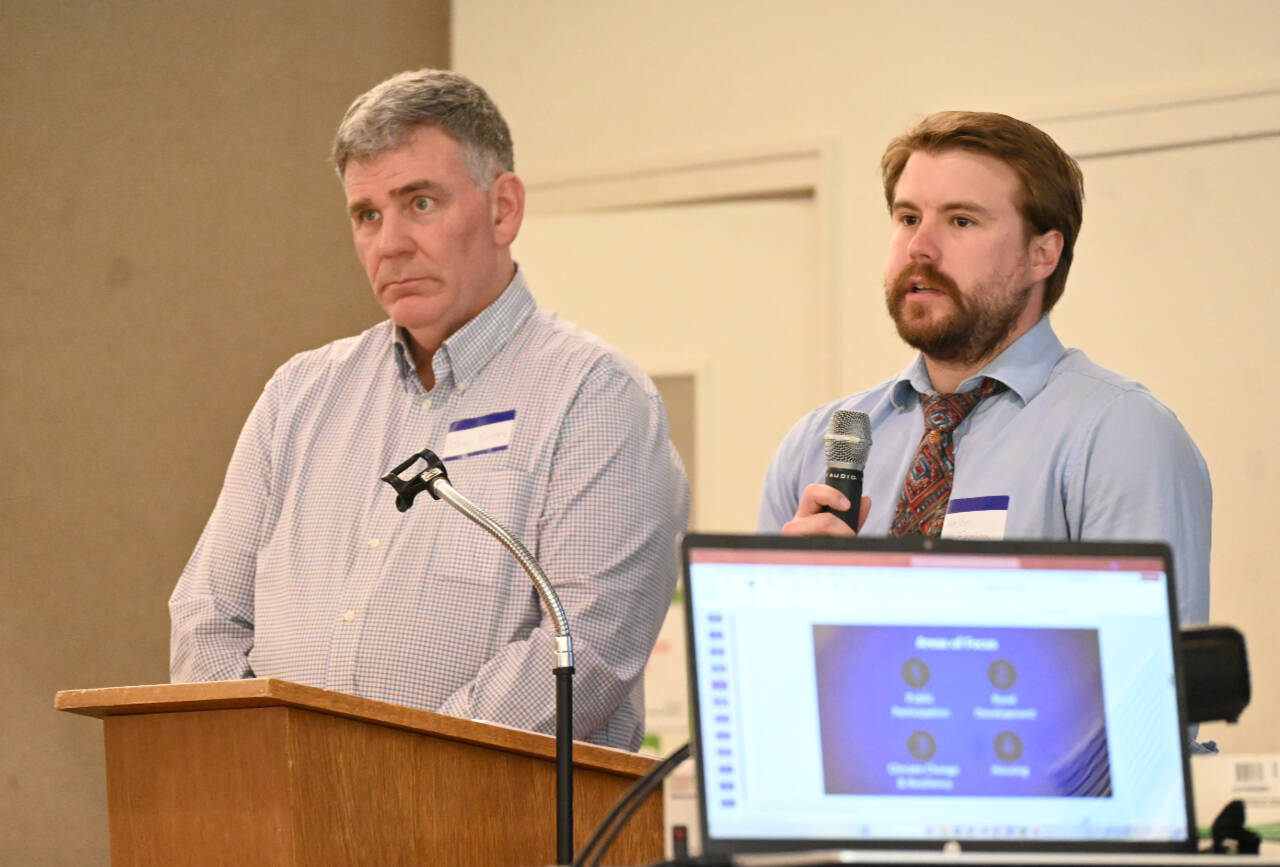Clallam County commissioners have adopted a brand new Agricultural Accessory Uses ordinance with guidelines for many farms countywide. It goes into effect July 5.
The ordinance, county leaders say, is designed to make it easier and cheaper for farmers to partake in agricultural accessory uses on their farms, such as temporary onsite retail stands, onsite retail stores and greenhouses, farmers markets, U-picks, farm tours, work stays and more.
The ordinance states that an agricultural accessory use “directly supports, promotes and is subordinate to a permitted primary agricultural use or agricultural activity on a farm.”
It only applies to farms that are 1 or more acres.
This is the “first dedicated ordinance that Clallam County has put together related to agriculture accessory uses,” said Holden Fleming, chief deputy director for the Department of Community Development, during a county commissioners’ meeting on June 25.
Complaints last summer about Sequim lavender farms — the first in 10-plus years — allegedly being out of compliance led county staff to act on updating the county’s code rather than seek enforcement.
Fleming said the ordinance originated from the desire to have more support and flexibility for the farming community.
“We’ve tried to craft an ordinance that supports the rural character of our community while also supporting the entrepreneurial spirit of our agricultural community,” he said.
Prior to adoption, many of the accessory uses required a conditional use permit (CUP), which is time consuming to acquire, requires a public hearing and costs at minimum $2,425 along with any required infrastructure requirements.
Now, farmers are either allowed to participate in these accessory uses outright or through a new process — a certificate of compliance, which costs $150 and requires a staff review rather than a public hearing.
At a Sequim-Dungeness Valley Chamber of Commerce luncheon on June 25, not long after getting county commissioners’s approval, Fleming gave an overview of the ordinance to chamber members and visitors.
He said the ordinance was successful after months of community outreach and county planning commissioner meetings, five drafts of the plan, and some farm visits.
“We haven’t solved everything every farm wants,” Fleming said, noting county leaders will continue to work with the farm owners to adjust the ordinance as needed.
“There’s more work to be done,” he said.
More ordinance details
Under the ordinance, farmers are allowed to have temporary onsite retail stands outright. They are also allowed to have onsite retail stores and onsite greenhouses if they obtain a certificate of compliance; they can operate these facilities from sunrise to 10 p.m. from May to October.
Onsite retail stores are publicly accessible spaces of less than 1,000 square feet. Farms wanting larger onsite retail stores must apply for a CUP.
On-site greenhouses must sell at least 90% agricultural products.
Farmers markets will be allowed for farms of 5 or more acres with a certificate of compliance, while farms less than 5 acres will have to obtain a CUP.
U-picks and farm tours are allowed for farms less than 5 acres with a certificate of compliance. Farms larger than 5 acres do not have to obtain a certificate.
Work stays are prohibited for farms less than 5 acres, and farms larger than 5 acres must obtain a certificate.
Farms less than 10 acres must obtain a CUP for other farm-dependent accessory activities, and farms larger than 10 acres must obtain a certificate of compliance.
Other activities could include things like corn mazes, tractor rides, agricultural demonstrations and more but are restricted to no more than 21 days a year.
The ordinance “gives farmers greater tools to take advantage of agri-tourism,” Department of Community Development Director Bruce Emery said, “which helps the farms to survive.”
While the ordinance covers a variety of uses, it did not address the use of farms for things such as weddings, camping, wineries, cideries, breweries and distilleries.
Events at farms like Sequim Lavender Festival are covered under special permitting, county staff previously said.
Emery said during the commissioners’ meeting that he sees the adoption of this ordinance as the “first step in a two-step process.”
The second part will be the development of the Growth Management Act update to the county’s Comprehensive Plan.
Emery said that part will “ask these broader questions and have a broader policy discussion to see if additional regulatory freedoms can be integrated into this zoning effort.”
The Comprehensive Plan update will begin with public outreach meetings and data gathering this fall. Emery estimates that part of the process will take three to six months.
Afterward, they will draft a comprehensive change document and conduct more formalized public meetings. Then they will integrate those ideas into the final product, which they will present to the county commissioners.
During the commissioners’ public comment period, citizens generally expressed their support for the guidelines that had been developed while acknowledging there is more work to be done.
“From my perspective, policy-making work is never done,” county commissioner Mike French said. “[It] is an ongoing process.”
Sequim Gazette editor Michael Dashiell, and reporter Matthew Nash contributed to this story.



